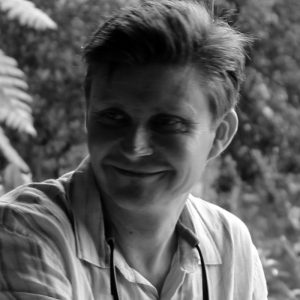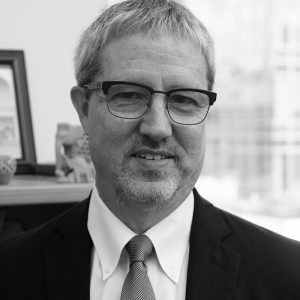Summary
Coastal ocean regions around the world are hubs of transportation, zones of rich mineral resources, fisheries and recreation, and home to billions of people and diverse ecosystems. Many such regions are threatened by a variety of factors and the increasing risk and associated impacts have catalyzed efforts to increase our understanding of the coastal ocean environment – in particular, the impacts of currents, waves and rising water levels on coastal flooding and/or the transport and erosion of coastal sediments – and our ability to make quantitativepredictions of coastal hydrodynamics.
Accurate modelling of coastal ocean processes requires mathematical models which go beyond the traditional shallow water equations typically used to model long-wave ocean currents. In addition, understanding the true impacts of processes such as the sea-level rise and severe storms requires coupling such models with transport models of sediment erosion/deposition.
DGCOAST proposed to build a numerical code based on hybridized discontinuous finite element methods for studying complex coastal hydrodynamics and sediment erosion with specific emphasis on regions of the Texas-U.S. and Portuguese coasts. Our numerical model shows a lot of promise to be used in studies of coastal hydro-morphodynamics driven by dispersive water waves. In fact, the numerical results highlighted in the attached file show the ability of the Green-Naghdi equations to capture hydrodynamics more accurately than the nonlinear shallow water equations in situations where dispersive wave properties are prevalent.
The hydrodynamic part of the model not only resolves accurately the water motion and the dispersive wave effects but also provides the ability to ignore the dispersive terms where needed, e.g. in surf zones, and includes wetting-drying, breaking wave detection, and slope- limiting features. The morphodynamic part can already capture the major features of bed erosion and deposition.
Moreover, our preliminary experiments indicate that the model reduces substantially the computational effort required to perform the numerical simulations and has thus a great potential to be used in modelling hydro-morphodynamic processes caused by dispersive waves in large coastal areas such as the Ria Formosa lagoon.
The DGCOAST numerical code will be of open access and thus available for researchers working in hydro-morphodynamic modelling of coastal circulation. The software is under development but can be accessed at www.github.com/UT-CHG/dgswemv2.
| Title | Atmosphere – Ocean – Solid Earth Coupling: Seismic Tools to Explore and Monitor the Oceans |
| Reference | UTAP-EXPL/EAC/0056/2017 |
| Scientific Area | Space-Earth Interactions |
| Funding | € 98 750,00 plus matched funding at UT Austin |
| Leading Institution | Associação do Instituto Superior Técnico para a Investigação e o Desenvolvimento (IST-ID) |
| Participating Institutions | The University of Austin at Texas (UT Austin) Universidade de Coimbra (UC) |
| Duration | 24 months |
| Begin date | November 1, 2018 |
| End date | October 31, 2020 |
| Keywords | Hybridized discontinuous Galerkin Method, Coastal Erosion, Dispersive waves, Green-Naghdi Flow |
Main Highlights
- A successful implementation of a dispersive wave hydrodynamic model based on hybridized discontinuous Galerkin finite element method over unstructured grids and development of a massively parallel solver which can execute numerical simulations of water waves using both discontinuous Galerkin discretizations of the nonlinear shallow water and the dispersive Green-Naghdi equations;
- Coupling the Green-Naghdi equations (the hydrodynamic part) with the sediment continuity Exner equation (the morphodynamic part);
- Capacity of the model to capture hydrodynamics more accurately than the nonlinear shallow water equations in situations where dispersive wave properties are prevalent and to estimate sediment erosion and deposition amounts due to suspended and bedload transport;
- Validation of the model with numerical experiments in the Ria Formosa lagoon area.
Indicators
- 12 Published/Accepted papers in peer-reviewed Journals. 1 Jointly authored and accepted for publication (PT-US);
- 2 Doctoral and 1 Undergraduate students involved in research work;
- 2 Mobility exchanges supported;
- 11 Communications outside Portugal.
Papers and Communications
- Araújo, D. J., Teixeira, E. V., & Urbano, J. M. (2021). On a two-phase free boundary problem ruled by the infinity Laplacian. In Israel Journal of Mathematics (Vol. 245, Issue 2, pp. 773–785). Springer Science and Business Media LLC. https://doi.org/10.1007/s11856-021-2227-9
- Pimentel, E., & Miguel Urbano, J. (2021). Existence and improved regularity for a nonlinear system with collapsing ellipticity. In ANNALI SCUOLA NORMALE SUPERIORE – CLASSE DI SCIENZE (pp. 1385–1400). Scuola Normale Superiore – Edizioni della Normale. https://doi.org/10.2422/2036-2145.201903_006
- Kazhyken, K., Videman, J., & Dawson, C. (2021). Discontinuous Galerkin methods for a dispersive wave hydro-morphodynamic model with bed-load transport. In Computer Methods in Applied Mechanics and Engineering (Vol. 375, p. 113592). Elsevier BV. https://doi.org/10.1016/j.cma.2020.113592
- Kazhyken, K., Videman, J., & Dawson, C. (2021). Discontinuous Galerkin methods for a dispersive wave hydro-sediment-morphodynamic model. In Computer Methods in Applied Mechanics and Engineering (Vol. 377, p. 113684). Elsevier BV. https://doi.org/10.1016/j.cma.2021.113684
- Cal, F. S., Dias, G. A. S., Pereira, B. M. M., & Videman, J. H. (2021). Trapped modes in a multi-layer fluid. In The Quarterly Journal of Mechanics and Applied Mathematics (Vol. 74, Issue 1, pp. 34–54). Oxford University Press (OUP). https://doi.org/10.1093/qjmam/hbaa019
- Pires, G. E., Rajagopal, K. R., & Videman, J. H. (2020). On the derivation of Reynolds-type equation for flows through porous media due to pressure gradients. In Journal of Porous Media (Vol. 23, Issue 12, pp. 1137–1151). Begell House. https://doi.org/10.1615/jpormedia.2020035447
- Gustafsson, T., Stenberg, R., & Videman, J. (2020). On Nitsche’s Method for Elastic Contact Problems. SIAM Journal on Scientific Computing, 42(2), B425–B446. https://doi.org/10.1137/19m1246869
- Caffarelli, L., Teymurazyan, R., & Urbano, J. M. (2020). Fully nonlinear integro-differential equations with deforming kernels. In Communications in Partial Differential Equations (Vol. 45, Issue 8, pp. 847–871). Informa UK Limited. https://doi.org/10.1080/03605302.2020.1739706
- Diehl, N. M. L., & Teymurazyan, R. (2020). Reaction–diffusion equations for the infinity Laplacian. In Nonlinear Analysis (Vol. 199, p. 111956). Elsevier BV. https://doi.org/10.1016/j.na.2020.111956
- Gustafsson, T., Stenberg, R., & Videman, J. (2019). Error analysis of Nitsche’s mortar method. In Numerische Mathematik (Vol. 142, Issue 4, pp. 973–994). Springer Science and Business Media LLC. https://doi.org/10.1007/s00211-019-01039-5
- Amaral, M. D., da Silva, J. V., Ricarte, G. C., & Teymurazyan, R. (2019). Sharp regularity estimates for quasilinear evolution equations. In Israel Journal of Mathematics (Vol. 231, Issue 1, pp. 25–45). Springer Science and Business Media LLC. https://doi.org/10.1007/s11856-019-1842-1
- Pereira, B. M. M., Dias, G. A. S., Cal, F. S., Rajagopal, K. R., & Videman, J. H. (2019). Lubrication Approximation for Fluids with Shear-Dependent Viscosity. In Fluids (Vol. 4, Issue 2, p. 98). MDPI AG. https://doi.org/10.3390/fluids4020098
- Ricarte, G., Teymurazyan, R., & Urbano, J. M. (2019). Singularly perturbed fully nonlinear parabolic problems and their asymptotic free boundaries. In Revista Matemática Iberoamericana (Vol. 35, Issue 5, pp. 1535–1558). European Mathematical Society – EMS – Publishing House GmbH. https://doi.org/10.4171/rmi/1091
- Samii, A., Kazhyken, K., Michoski, C., & Dawson, C. (2019). A Comparison of the Explicit and Implicit Hybridizable Discontinuous Galerkin Methods for Nonlinear Shallow Water Equations. In Journal of Scientific Computing (Vol. 80, Issue 3, pp. 1936–1956). Springer Science and Business Media LLC. https://doi.org/10.1007/s10915-019-01007-z
E-Poster
Project Team
Juha Videman
DGCOAST
Clint Dawson
DGCOAST


